|
Fourth Meeting of the Subsidiary
Body for Scientific, Technical, and Technological Advice (SBSTTA-4) |
||||
|
|
|
|
| Working Group I | |
 |
|
| UNEP confirmed their offer to provide assitance in the development of the Global Taxonomy Initiative | 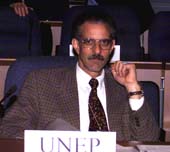 |
 |
|
| Working Group II | |
| On new plant technologies, The UK submitted compromise text recognizing the precautionary approach and recommending that Parties not approve commercial use of products incorporating GURT technologies until authorized scientific assessments validate their safe use. | |
| CÔTE D'IVOIRE supported the Norwegian proposal, emphasizing the need to address GURT field-testing and food security. | 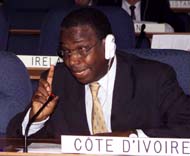 |
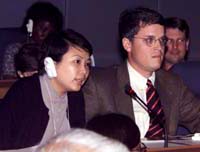 |
|
|
In the morning, WGII continued their deliberations on Chair Zipangani Vokhiwa's (Malawi) draft recommendations on new plant technology (UNEP/CBD/SBSTTA/4/WG.2/CRP.1/Rev.1) |
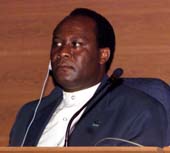 |
 |
|
| Fred Fortier, representing the INDIGENOUS PEOPLES BIODIVERSITY NETWORK (pictured left) encouraged development of legal frameworks to ensure indigenous peoples' involvement in tourism planning. Alison Johnston, on behalf of the INTERNATIONAL SUPPORT GROUP FOR SUSTAINABLE TOURISM (right) noted the absence of guidelines for meaningful consultation with indigenous and local communities. | 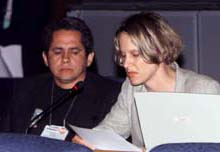 |

